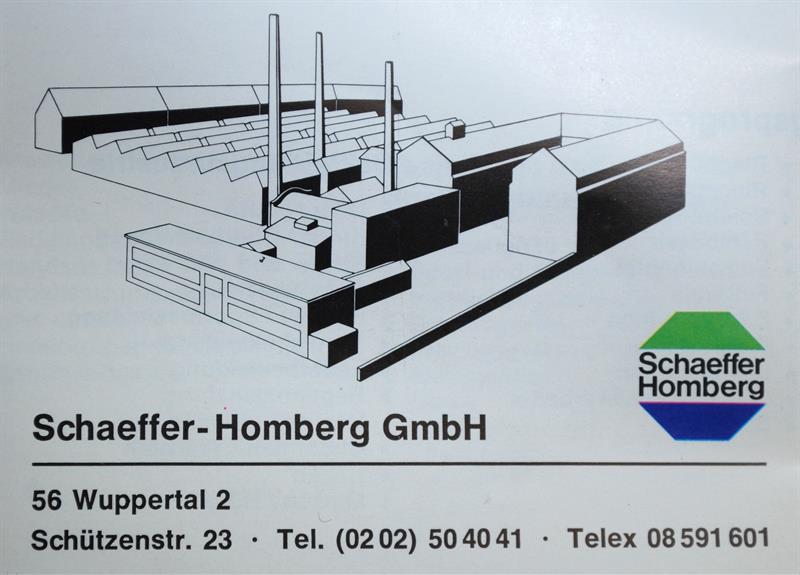
On the 11th of March in 1876, Carl Schaeffer opens a business for fabrics for women’s shoes, shoe fasteners and eyelets in Barmen. However, already in 1880 he starts with the production of different articles made of metal.
In 1885, Paul Albert Regnault from Grenoble invents the “Kronenfeld press button” which will be the precursor of the circular spring press button. Carl Schaeffer, in collaboration with Berlin company Pischon, makes sure to have the exclusive right to sell this new press buttons in the former territory of the German Reich.
In 1901, the production of the rivetable press button begins, hence bigger premises are needed. Therefore, in 1906 the construction of the bigger factory begins.
After Carl Schaeffer’s death in 1911, the company merges with Pischon in 1913, and forms the Schaeffer-Pischon AG.
In 1921, clothing fasteners and accessories become part of the range of products.
In 1927, Schaeffer-Pischon merges with the Felix Homberg GmbH, and forms the Schaeffer-Homberg GmbH.
In
1928, the GHE (Gebrüder Happich Elberfeld) from Wuppertal, entrusts the Schaeffer-Homberg GmbH with the production of the self-locking fastener at the time called “
Der original-Knopf”. This marks the start of the well-known German fastener’s success story. To this day, the production and the know-how of the original fastener remain in the hands of Schaeffertec (
see also LOXX Automotive).
In 1938, the Rheinnadel group purchases capital shares of the Schaeffer-Homberg GmbH. The factory is modernized and extended.
In 1951, Schaeffer-Homberg celebrates its 75th anniversary. Despite of considerable but nonessential damages caused by air strikes, the factory miraculously survived the war, since the only direct hit was a dud bomb. With combined efforts of the company and the employees, the reconstruction succeeded. By March 1951 the company is already able to employ 550 workers.
Between 1965 and 1970, the company continuously orients itself towards the newest, up-to-date industry standards. The new emerging EDP systems are acquired, and the company invests into purchasing the new high performance punching presses, segmented stamping and deep drawing tools, as well as electrical discharge machines.
In 1973, new buttons and rivets suitable for the modern jeans fashion are added to the program. Furthermore, the new product line “technical industry”, containing customized stamping and deep drawn parts as well as fastening and spring elements, is introduced.
Starting in 1976, the former made investments pay off. Schaeffer-Homberg becomes one of the leading suppliers for buttons for all jeans brands. Consequently, subsidiary companies are founded worldwide. The huge organizational and technical success during the 1970s and 1980s that made the company one of the leading businesses in the region, has to be accredited to Prof. Ing. Friedhelm Kramer who managed Schaeffer-Homberg during that period.
In 1982, Scovill – a US company and then a significant competitor in the clothing industry – takes a 50% stake in Schaeffer-Homberg. The Schaeffer-Scovill Verbindungstechnik GmbH is formed.
In 1988, the Wilhelm Prym GmbH & Co. KG buys the Schaeffertec-Scovill GmbH, and the Schaeffer GmbH is formed. As part of the Prym group Schaeffer, the formerly successful medium-sized company never gains the importance it deserves. As a result of the international relocation of the clothing industry and the abandonment of the product line “technical industry”, investments are reduced and employment is depleted.
After Prym is fined because of collusive pricing in 2003, the closing of the old-established company Schaeffer is moving closer. In 2010, the manufacturing in the 104 years old factory stops, and the lights go out forever.